- Home
- Robert Silverberg
The Millennium Express: The Collected Stories of Robert Silverberg, Volume Nine
The Millennium Express: The Collected Stories of Robert Silverberg, Volume Nine Read online
The Millennium Express Copyright © 2014 by Agberg, Ltd. All rights reserved.
Interior design Copyright © 2014 by Desert Isle Design, LLC. All rights reserved.
First Edition
ISBN
978-1-59606-655-7
Subterranean Press
PO Box 190106
Burton, MI 48519
www.subterraneanpress.com
COPYRIGHT ACKNOWLEDGMENTS:
“Diana of the Hundred Breasts” and “The Church at Monte Saturno” first appeared in Realms of Fantasy.
“Beauty in the Night” and “The Tree that Grew from the Sky” first appeared in Science Fiction Age.
“Call Me Titan” first appeared in Asimov’s Science Fiction.
“Hanosz Prime Goes to Old Earth” first appeared in Asimov’s Science Fiction.
“The Millennium Express” first appeared in Playboy.
“Travelers” first appeared in Amazing Stories.
“The Colonel Returns to the Stars” first appeared in Between Worlds, edited by Robert Silverberg.
“The Eater of Dreams” first appeared in Asimov’s Science Fiction.
“A Piece of the Great World” first appeared in One Million A.D., edited by Gardner Dozois.
“Against the Current” first appeared in Fantasy & Science Fiction.
“The True Vintage of Erzuine Thale” first appeared in Songs of the Dying Earth, edited by George R.R. Martin and Gardner Dozois.
“Defenders of the Frontier” first appeared in Warriors, edited by George R.R. Martin and Gardner Dozois.
“The Prisoner” first appeared in The Book of Dreams, edited by Nick Gevers.
“Smithers and the Ghosts of the Thar” first appeared in Ghosts by Gaslight, edited by Nick Gevers and Jack Dann.
Copyright © 1996, 1997, 1999, 2004, 2005, 2006, 2007, 2009, 2010, 2011 by Agberg, Ltd.
Introductory matter copyright © 2014 by Agberg, Ltd.
For
Scott Edelman
Shawna McCarthy
Martin H. Greenberg
Luis Ortiz
John R. Fultz
Alice K. Turner
Gardner Dozois
George R.R. Martin
Kim Mohan
Dave Gross
Sheila Williams
Gordon van Gelder
Nick Gevers
Jack Dann
Table of Contents
Introduction
Diana of the Hundred Breasts
Beauty in the Night
Call Me Titan
The Tree That Grew From the Sky
The Church at Monte Saturno
Hanosz Prime Goes To Old Earth
The Millennium Express
Travelers
The Colonel Returns to the Stars
The Eater of Dreams
A Piece of the Great World
Against the Current
The True Vintage of Erzuine Thale
Defenders of the Frontier
The Prisoner
Smithers and the Ghosts of the Thar
Introduction
So we come now to the ninth and, I suspect, the last of these volumes, covering the sixth decade of my writing career. I’m still here, and I’m still reasonably healthy, but my eightieth birthday is not very far in the future as I write this, and I’ve become less and less active as a writer. I’ve done only a couple of stories since I wrote the ones collected here, and they were Majipoor stories that I have included in my book Tales of Majipoor. I’ve learned over the course of my long career that it’s a good idea never to say never, but I suspect that in the time remaining to me I’m not going to write enough new material to fill another volume of the size of these nine, so this is—probably—the final book of this nine-volume Subterranean Press series.
The stories in this book represent the short-story work I did between July of 1995 and December of 2009. Not a great quantity of fiction to show for the work of a decade and a half, I suppose, not by the Silverberg standards of an earlier day, but, as I note in the introduction to one of the stories here, every writer tends to slow down a bit with age, even one as prolific as I have been. A certain drying-up of inspiration sets in, I suppose, or, perhaps, a certain unwillingness to seize on a bit of inspiration and see where it will take one. There have been plenty of occasions in recent years when the edge of a story idea seemed to present itself to me, and I simply shrugged and let it go fading back into invisibility, because I didn’t feel much like writing anything just then. That wouldn’t have happened fifty or forty or even thirty years ago.
The inroads of age can’t be given all the blame, though. There’s also—and perhaps this is a side effect of aging, too—the dwindling of the drive to excel that propels one through the early years of one’s career. When I was twenty or so, I felt the need to sell as many stories as possible—to write as fast as I could, to fill every science-fiction magazine with my work. It was a gloriously sweaty time for me, when I banged away at the typewriter keys all day long, shipped two or three stories a week to my editors, and sold them all. A decade later, when I had proven whatever point I had set out to make with that lunatic prolificity, I wanted now to show that I was not only a greatly productive writer but that I was one who had something of his own to add to the body of literature that is science fiction; and then there came flying from me a host of novels—Thorns, The Masks of Time, The Man in the Maze, Downward to the Earth, and on and on to The Book of Skulls and Dying Inside, along with the dozens of short stories that fill the middle volumes of this series—that won me my reputation in the field and brought me the awards that sit on a shelf before me as I write this. But, having won that reputation and those awards, I began to feel, as the years went along, that I had no need of defending it by continuing to publish three or four novels and ten short stories a year, and so I slowed down, even stopped writing entirely for one four-year period in the 1970s. By the time the Science Fiction Writers of America, to my great delight, bestowed its Grand Master award on me in 2004, putting me in an exclusive club almost entirely made up of the writers (Robert A. Heinlein, Isaac Asimov, Jack Williamson, Alfred Bester, A.E. van Vogt, Ray Bradbury, Poul Anderson, Fritz Leiber, Jack Vance, Clifford Simak, L. Sprague de Camp, etc.) whose work I had read and admired when I was a youngster just starting out, I felt I had no worlds left to conquer.
Then, too, as a writer moving through his seventies, and getting rapidly toward the end of them, I feel a certain sense that I am no longer really a part of the contemporary world, from which all extrapolation must flow. My own success has isolated me from everyday mundane reality. I don’t have a day job and write after hours; writing has always been my day job, a full-time one, and I’ve spent my whole life as a self-employed man working at home. I’m not out there in the fast-moving flow of daily toil. Thus I have only a superficial acquaintance with the sort of life that most people accept as routine. Like everyone else, I use a computer, and I know enough about it to make it do the things I need it to do, but I have made no attempt to keep up with changes in computer technology, nor am I a master of computer jargon. You will not see me walking through the streets peering at the screen of my smartphone, either, because I don’t have one, and I have had no interest in entering what I have come to think of as the iPod/iPhone/YouTube/Facebook culture. I don’t scorn those things—far from it. They have reshaped our world into the fantastic glittering high-tech future that I used to write about. But, having lived on into that future myself, I find that at my age such things d
on’t fill any need for me, and so I can’t claim to be familiar with them, and thus I have put myself at some distance from the people who read science fiction today. I don’t know enough about their world to be able to write convincingly about the transformations of it that lie ahead. If you don’t participate in today’s world to any significant extent, you can’t write convincingly about the world of tomorrow. And if I can’t do that convincingly, I’d rather not do it at all.
Wider cultural changes than the coming of new gadgetry have affected me as a writer, too. I had a classical education, nearly sixty years ago. It seems almost Victorian now. Hardly anyone studies the things I studied. Who would understand the buried references in my stories to Jacobean playwrights, Virgil, Dante, Monteverdi, Bach, even Mann and Kafka and Joyce? Nor are the cultural issues that seem to concern the modern-day academic world anything like the ones that concerned us in my college days; and the whole world of popular culture is a mystery to me. What do I know of the current pop-music stars and graphic-novel artists and television shows? My world is as alien to modern readers as theirs is to me. Even the language has changed radically in my lifetime. Most science-fiction readers are relatively young. My grammar is not their grammar. My vocabulary is not their vocabulary. If I’m not able to speak to them in an understandable way, how can I tell them stories?
There have been changes in the publishing of science fiction in the United States, also, that put a premium on repetitious sequels, formulaic themes, and lengthy, overstuffed plots full of ferocious melodramatic conflict. I thought we had outgrown all that fifty years ago. I was wrong. It has all come back, and come back with a vengeance, in shiny modern guise. Not that all science fiction published today is like that, of course; but I have the ineradicable conviction that the bang-bang multi-volume stuff is what the publishers really want, and that the quieter sort of fiction that I preferred to read and write is merely tolerated at best. At my age it’s easier not to go to the effort of writing than to try to fight against that kind of gentle toleration.
But, for all that, I went on writing short fiction all through the seventh and eighth decades of my life, and though I’m not very active these days, I would still pay attention if someone were to approach me with an interesting and challenging short-story project, or if some absolutely irresistible story idea were to come into my mind. I will not, at this point, try to claim that the stories that are collected here are the last short stories I will ever write. Surely some editor, in the years ahead, will tickle my imagination with a proposal I can’t resist. But I doubt that that will be happening very often; and, meanwhile, here’s the harvest of the fourteen years that began in 1995—not an enormous number of stories, no, but stories nevertheless that I think are worth reading and reprinting.
—Robert Silverberg
Diana of the Hundred Breasts
We visited Turkey in April, 1994—Turkey is a country that has exerted continued fascination on me since my first trip there in 1967, which produced my Byzantine time-travel novel Up the Line—and this time we went down the Aegean coast, which is rich in the ruins of the ancient Greek culture that formerly flourished there. Among our stops was Ephesus, once the site of the Temple of Artemis, one of the Seven Wonders of the Ancient World. There’s nothing left of that glorious temple today—it was burned down by a disgruntled parishioner in 356 B.C., rebuilt by Alexander the Great, sacked by the Goths, and later stripped of its masonry to build the Byzantine cathedral of Hagia Sophia in Constantinople, so all that remains is an open field with a single column rising above a scattering of stonework. But in the small museum in the adjacent Turkish town of Seljuk are the two mysterious statues of Artemis that once were worshipped there: huge stone figures of a woman whose midsection is festooned with what seem to be dozens of breasts, though perhaps they are eggs. Breasts or eggs, no one is sure, but either way they are symbols of fertility, and it is apparent that the Artemis of Ephesus was a fertility goddess rather than the virginal huntress of classical Greek myth.
Artemis passed into Roman mythology as the goddess Diana, and continued to be worshipped there into the Christian era. We read in the Book of Acts, 19, that the Apostle Paul turned up there in the first century A.D. and denounced the cult of Diana and the famed statues thereof, saying, “They be no gods, which are made by hands.” He called for the destruction of her shrine. The citizens of Ephesus, full of wrath at this, gathered and cried out with one voice, the Bible tells us, “Great is Diana of the Ephesians!” Eventually things quieted down, though, and Paul got out of town with his skin intact, and ultimately neither Diana nor Jesus emerged victorious from the fray, because today Ephesus is a very picturesque ruin and Allah is the god of the region where it was located.
Avram Davidson wrote a clever, charming, complex little story (did he ever write any other kind?) in 1958 called “Great is Diana,” which makes oblique reference to the famed many-breasted statues of Ephesus. The Davidson story is mostly about breasts, rather than the cult of Diana/Artemis, but in any case I had long forgotten it in July of 1995, when, brimming with images from the previous year’s Turkish trip, I set about to write a fantasy story that would explain what those strange statues were doing in Ephesus.
The immediate precipitating factor was a plaintive phone-call from Alice K. Turner, the fiction editor of Playboy, for whom I had written a great many stories over many years and with whom I had a remarkable editor-writer relationship that was for two decades a fascinating creative challenge for me. Alice called up to complain that her inventory of science-fiction stories had dwindled to zero, and wondered if I would mind writing one for her. I have attempted, since 1970 or so, to do no writing at all in the summer months, and here we were in the splendid California June of unending sunshine, and yet, and yet, how could I ignore such a request from Alice Turner? So I wrote her, on June 30, 1995, that I was halfway through the six-month holiday from writing that I had bestowed upon myself after a particularly grueling winter of work, but I was getting a bit restless with a daily life of swimming, gardening, and sitting on the porch reading, so perhaps I might just interrupt my dolce far niente and do a story for her.
And so I did, although things didn’t work out quite as planned. Within ten days I had written “Diana of the Hundred Breasts,” which I sent to her with a note saying, “Herewith is a report for you on What I Did On My Summer Vacation In Turkey Last Year. The scenery is rendered reliably; I did make up a few of the details of the events, I have to confess.”
But Alice didn’t like the story. It was what she called an “IRS Story”, she said—stories that I would set in exotic places merely to prove, so she said, that my travel expenses were legitimately tax-deductible. Alice had rejected two or three of my foreign-based stories over the years, always with that same reason and always to my bewilderment, because I couldn’t understand her objection to foreign-based stories, whether they were IRS-connected or not. Also she didn’t care much for the plot and she didn’t think one of the characters was realistically rendered. And I think she was bothered by the fact that I had given her a fantasy story rather than the pure science-fiction tale that she had asked me for. (Though something in my excessively rational mind seems to recoil at the irrationality that lies at the heart of most fantasy themes, so that when I set out to write fantasy it usually turns out to have a science-fictional explanation, as can be seen here.)
Well, rejections happen. Playboy under Alice Turner was not only the highest-paying fiction market around, but also one of the toughest, and though I sold her plenty of stories over the years, I had to expect that once in a while she would turn one down. I replied to her rejection note on July 31: “Well, of course I disagree, but what the hell. I’ll sell it somewhere else and sell you something else next year.”
Which I did. I shipped the story off to the new fantasy magazine Realms of Fantasy, edited by Shawna McCarthy, for whom I had written one of my favorite stories, “Sailing to Byzantium,” when she had been editor of Isaac Asimov�
��s Science Fiction Magazine ten years before. Shawna bought it instantly and published it in her February, 1996 issue. I don’t like having stories rejected any more than any other writer would, but in a long career it’s bound to happen now and then to anybody, and I am quick on the rebound when it does.
The two famous marble statues stand facing each other in a front room of the little museum in the scruffy Turkish town of Seljuk, which lies just north of the ruins of the once-great Greek and Roman city of Ephesus. There was a photograph of the bigger one in my guidebook, of course. But it hadn’t prepared me—photos never really do—for the full bizarre impact of the actuality.
The larger of the statues is about nine feet tall, the other one about six. Archaeologists found both of them in the courtyard of a building of this ancient city where the goddess Diana was revered. They show—you must have seen a picture of one, some time or other—a serene, slender woman wearing an ornamental headdress that is all that remains of an huge, intricate crown. Her arms are outstretched and the lower half of her body is swathed in a tight cylindrical gown. From waist to ankles, that gown is decorated with rows of vividly carved images of bees and of cattle. But that’s not where your eyes travel first, because the entire midsection of Diana of Ephesus is festooned with a grotesque triple ring of bulging pendulous breasts. Dozens of them, or several dozens. A great many.
“Perhaps they’re actually eggs,” said my brother Charlie the professor, standing just behind me. For the past eighteen months Charlie had been one of the leaders of the team of University of Pennsylvania archaeologists that has been digging lately at Ephesus. “Or fruits of some kind, apples, pears. Nobody’s really sure. Globular fertility symbols, that’s all we can say. But I think they’re tits, myself. The tits of the Great Mother, with an abundance of milk for all. Enough tits to satisfy anybody’s oral cravings, and then some.”

 The Longest Way Home
The Longest Way Home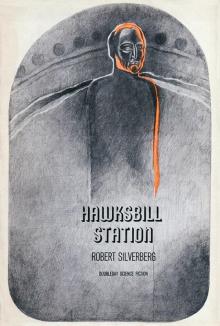 Hawksbill Station
Hawksbill Station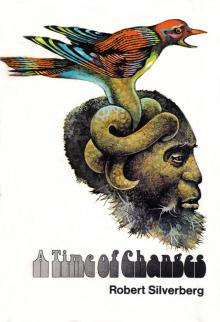 A Time of Changes
A Time of Changes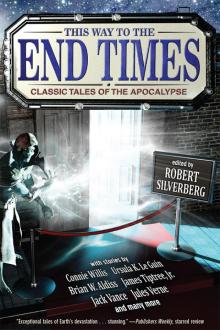 This Way to the End Times: Classic Tales of the Apocalypse
This Way to the End Times: Classic Tales of the Apocalypse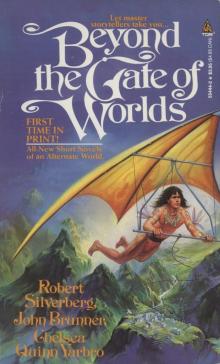 Beyond the Gate of Worlds
Beyond the Gate of Worlds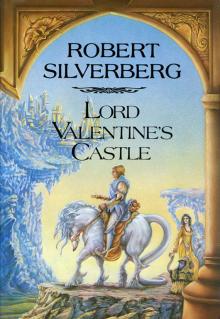 Lord Valentine's Castle
Lord Valentine's Castle The Man in the Maze
The Man in the Maze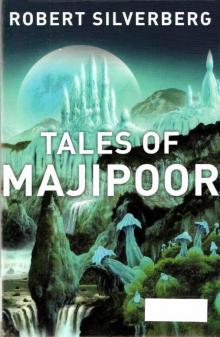 Tales of Majipoor
Tales of Majipoor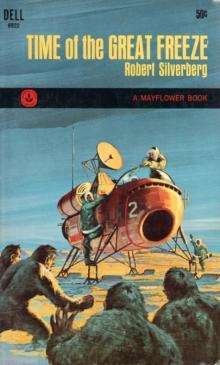 Time of the Great Freeze
Time of the Great Freeze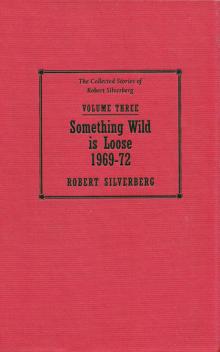 The Collected Stories of Robert Silverberg, Volume 3: Something Wild Is Loose: 1969-72
The Collected Stories of Robert Silverberg, Volume 3: Something Wild Is Loose: 1969-72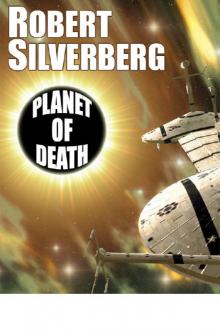 Planet of Death
Planet of Death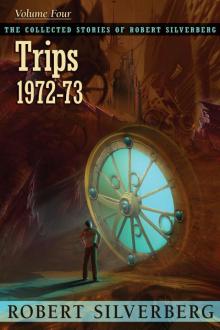 Trips: The Collected Stories of Robert Silverberg, Volume Four
Trips: The Collected Stories of Robert Silverberg, Volume Four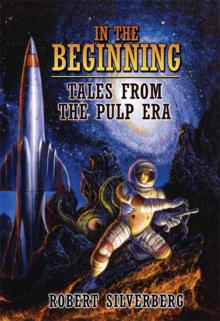 In the Beginning: Tales From the Pulp Era
In the Beginning: Tales From the Pulp Era Hot Sky at Midnight
Hot Sky at Midnight Valentine Pontifex
Valentine Pontifex Up the Line
Up the Line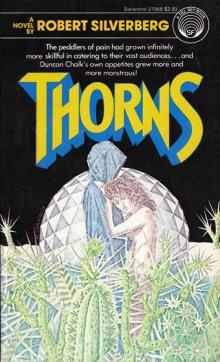 Thorns
Thorns Amanda and the Alien
Amanda and the Alien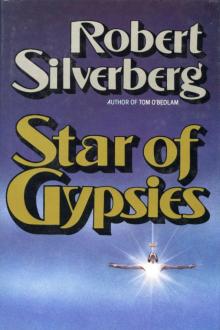 Star of Gypsies
Star of Gypsies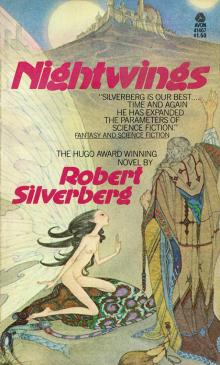 Nightwings
Nightwings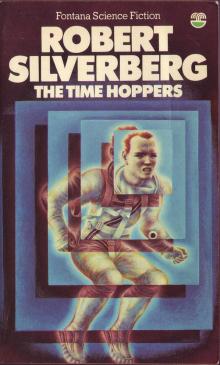 The Time Hoppers
The Time Hoppers Blood on the Mink
Blood on the Mink Dying Inside
Dying Inside The Last Song of Orpheus
The Last Song of Orpheus The King of Dreams
The King of Dreams The Stochastic Man
The Stochastic Man The Collected Stories of Robert Silverberg, Volume Seven: We Are for the Dark
The Collected Stories of Robert Silverberg, Volume Seven: We Are for the Dark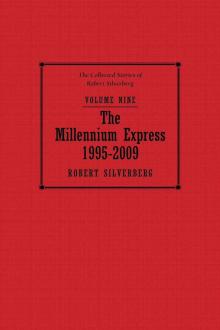 The Millennium Express: The Collected Stories of Robert Silverberg, Volume Nine
The Millennium Express: The Collected Stories of Robert Silverberg, Volume Nine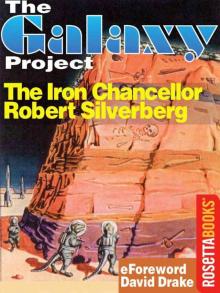 The Iron Chancellor
The Iron Chancellor Lord Prestimion
Lord Prestimion To Open the Sky
To Open the Sky The World Inside
The World Inside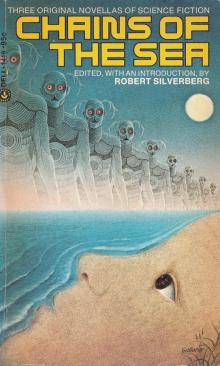 Chains of the Sea
Chains of the Sea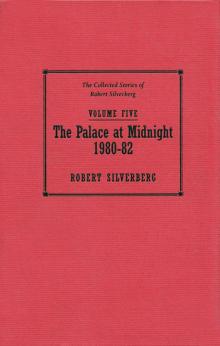 The Collected Stories of Robert Silverberg, Volume Five: The Palace at Midnight
The Collected Stories of Robert Silverberg, Volume Five: The Palace at Midnight Postmark Ganymede
Postmark Ganymede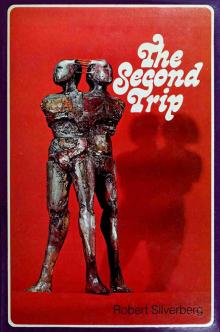 The Second Trip
The Second Trip The Collected Stories of Robert Silverberg, Volume 4: Trips: 1972-73
The Collected Stories of Robert Silverberg, Volume 4: Trips: 1972-73 Son of Man
Son of Man Tom O'Bedlam
Tom O'Bedlam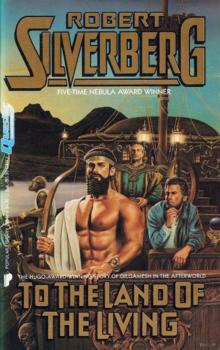 To the Land of the Living
To the Land of the Living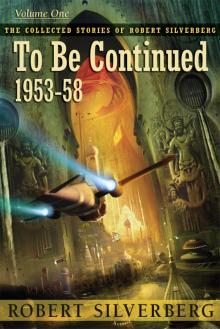 To Be Continued: The Collected Stories of Robert Silverberg, Volume One
To Be Continued: The Collected Stories of Robert Silverberg, Volume One Shadrach in the Furnace
Shadrach in the Furnace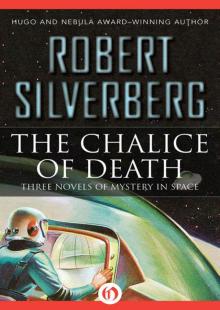 The Chalice of Death: Three Novels of Mystery in Space
The Chalice of Death: Three Novels of Mystery in Space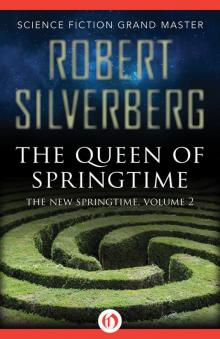 The Queen of Springtime
The Queen of Springtime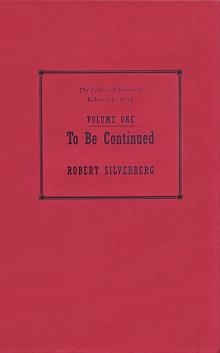 To Be Continued 1953-1958
To Be Continued 1953-1958 Legends
Legends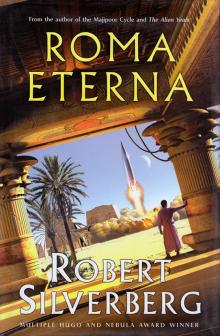 Roma Eterna
Roma Eterna To Live Again
To Live Again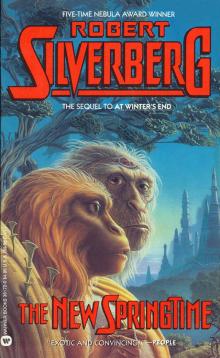 At Winter's End
At Winter's End Needle in a Timestack
Needle in a Timestack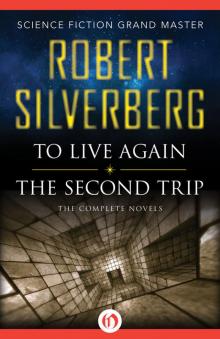 To Live Again and the Second Trip: The Complete Novels
To Live Again and the Second Trip: The Complete Novels Lord of Darkness
Lord of Darkness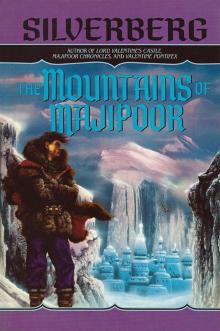 The Mountains of Majipoor
The Mountains of Majipoor The World Outside
The World Outside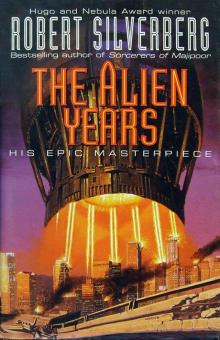 The Alien Years
The Alien Years The Book of Skulls
The Book of Skulls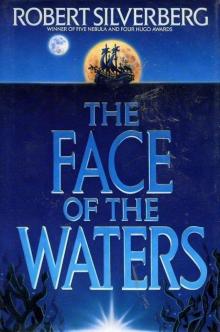 The Face of the Waters
The Face of the Waters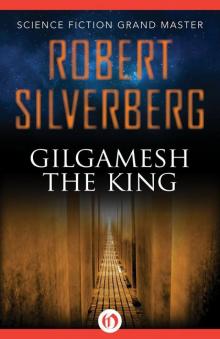 Gilgamesh the King
Gilgamesh the King The Collected Stories of Robert Silverberg, Volume 6: Multiples: 1983-87
The Collected Stories of Robert Silverberg, Volume 6: Multiples: 1983-87 The Happy Unfortunate
The Happy Unfortunate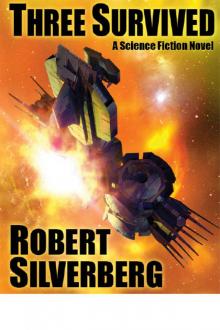 Three Survived
Three Survived Cronos
Cronos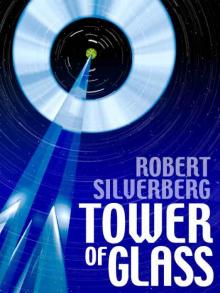 Tower of Glass
Tower of Glass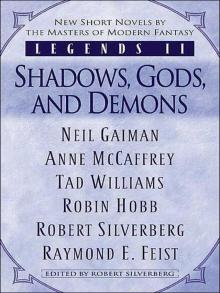 Legends II
Legends II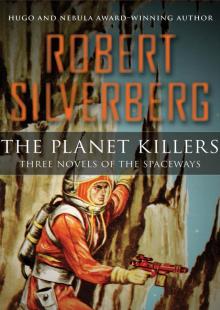 The Planet Killers
The Planet Killers The Collected Stories of Robert Silverberg, Volume 2: To the Dark Star: 1962-69
The Collected Stories of Robert Silverberg, Volume 2: To the Dark Star: 1962-69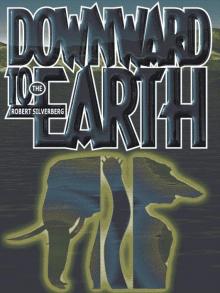 Downward to the Earth
Downward to the Earth Lord Valentine's Castle: Book One of the Majipoor Cycle
Lord Valentine's Castle: Book One of the Majipoor Cycle Hot Times in Magma City, 1990-95
Hot Times in Magma City, 1990-95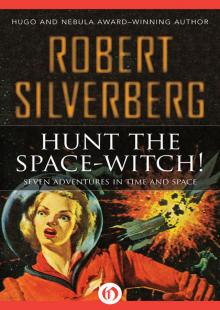 Hunt the Space-Witch! Seven Adventures in Time and Space
Hunt the Space-Witch! Seven Adventures in Time and Space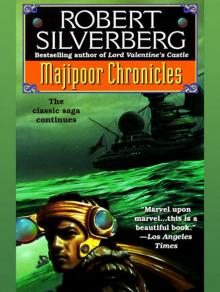 Majipoor Chronicles
Majipoor Chronicles The Robert Silverberg Science Fiction Megapack(r)
The Robert Silverberg Science Fiction Megapack(r)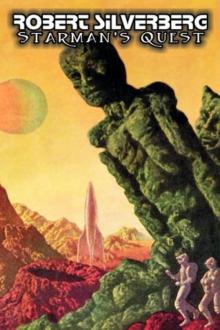 Starman's Quest
Starman's Quest Car Sinister
Car Sinister Worlds of Maybe
Worlds of Maybe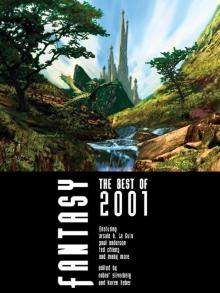 Fantasy The Best of 2001
Fantasy The Best of 2001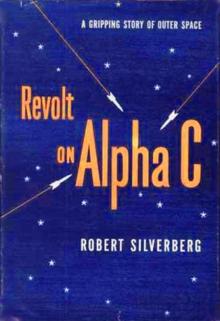 Revolt on Alpha C
Revolt on Alpha C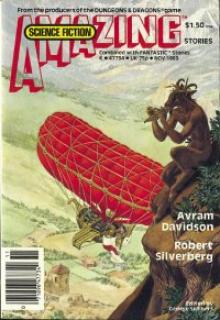 Homefaring
Homefaring The Pardoner's Tale
The Pardoner's Tale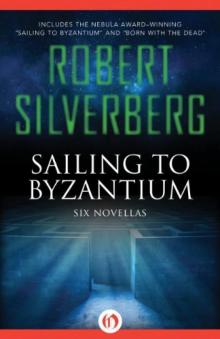 Sailing to Byzantium - Six Novellas
Sailing to Byzantium - Six Novellas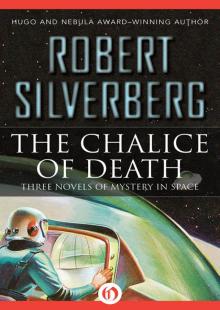 The Chalice of Death
The Chalice of Death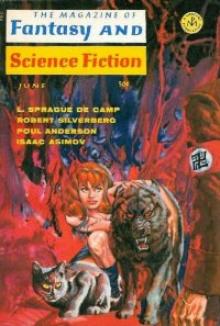 Sundance
Sundance A Tip on a Turtle
A Tip on a Turtle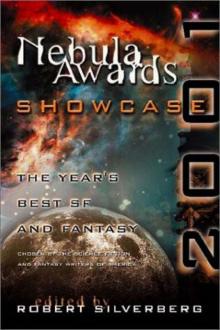 Nebula Awards Showcase 2001: The Year's Best SF and Fantasy Chosen by the Science Fiction and Fantasy Writers of America
Nebula Awards Showcase 2001: The Year's Best SF and Fantasy Chosen by the Science Fiction and Fantasy Writers of America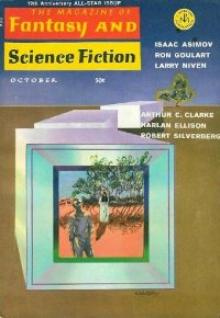 The Fangs of the Trees
The Fangs of the Trees The Palace at Midnight: The Collected Work of Robert Silverberg, Volume Five
The Palace at Midnight: The Collected Work of Robert Silverberg, Volume Five The Millennium Express - 1995-2009 - The Collected Stories of Robert Silverberg Volume Nine
The Millennium Express - 1995-2009 - The Collected Stories of Robert Silverberg Volume Nine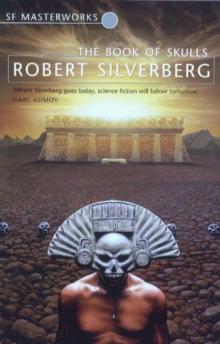 Book of Skulls
Book of Skulls Passengers
Passengers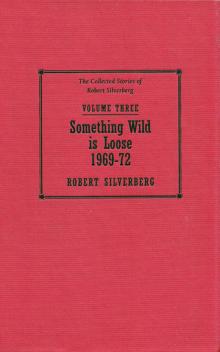 Something Wild is Loose - 1969–72 - The Collected Stories of Robert Silverberg Volume Three
Something Wild is Loose - 1969–72 - The Collected Stories of Robert Silverberg Volume Three Multiples
Multiples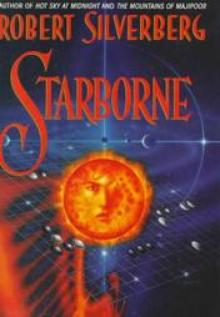 Starborne
Starborne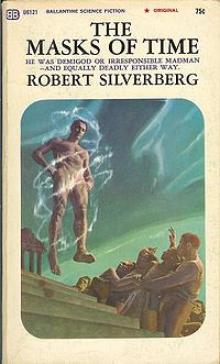 The Masks of Time
The Masks of Time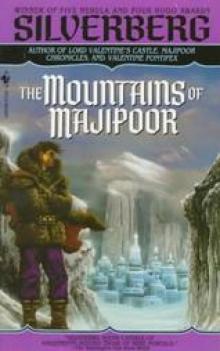 The Mountains of Majipoor m-8
The Mountains of Majipoor m-8 Multiples (1983-87)
Multiples (1983-87) Those Who Watch
Those Who Watch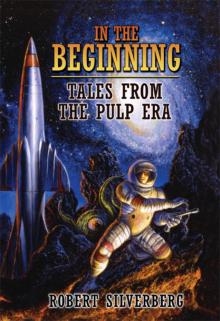 In the Beginning
In the Beginning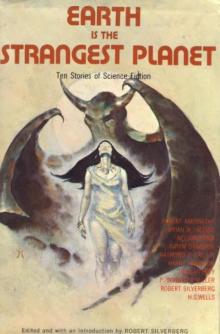 Earth Is The Strangest Planet
Earth Is The Strangest Planet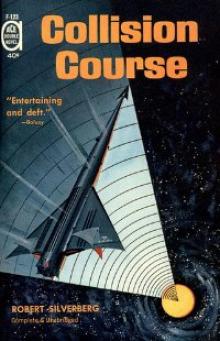 Collision Course
Collision Course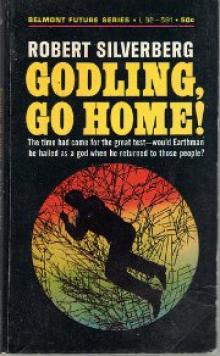 Neutral Planet
Neutral Planet To the Dark Star - 1962–69 - The Collected Stories of Robert Silverberg Volume Two
To the Dark Star - 1962–69 - The Collected Stories of Robert Silverberg Volume Two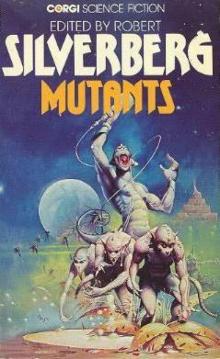 Mutants
Mutants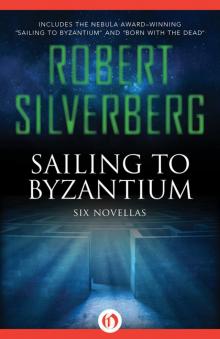 Sailing to Byzantium
Sailing to Byzantium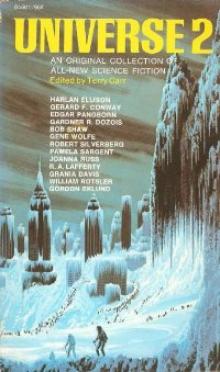 When We Went to See the End of the World
When We Went to See the End of the World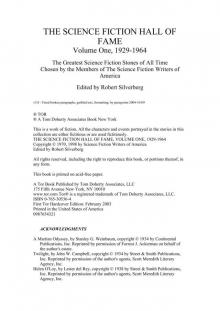 Robert Silverberg The Science Fiction Hall Of Fame Volume One, 1929-1964
Robert Silverberg The Science Fiction Hall Of Fame Volume One, 1929-1964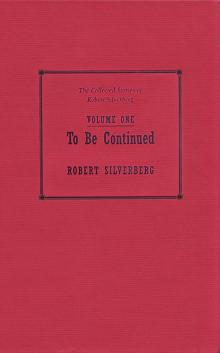 To Be Continued - 1953–58 - The Collected Stories of Robert Silverberg Volume One
To Be Continued - 1953–58 - The Collected Stories of Robert Silverberg Volume One Valentine Pontifex m-3
Valentine Pontifex m-3 Gianni
Gianni Majipoor Chronicles m-2
Majipoor Chronicles m-2 We Are for the Dark (1987-90)
We Are for the Dark (1987-90)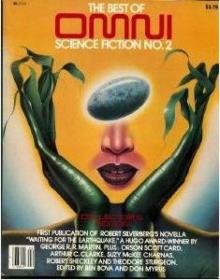 Waiting for the Earthquake
Waiting for the Earthquake Fantasy: The Best of 2001
Fantasy: The Best of 2001 How It Was When the Past Went Away
How It Was When the Past Went Away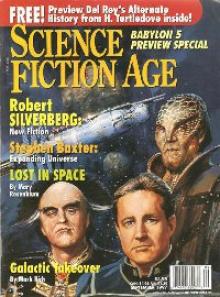 Beauty in the Night
Beauty in the Night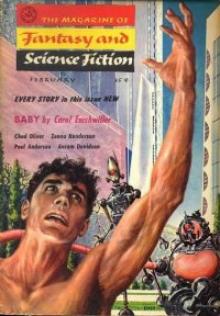 The Man Who Never Forgot
The Man Who Never Forgot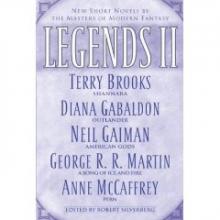 The Book of Changes m-9
The Book of Changes m-9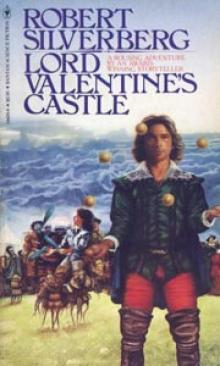 Lord Valentine's Castle m-1
Lord Valentine's Castle m-1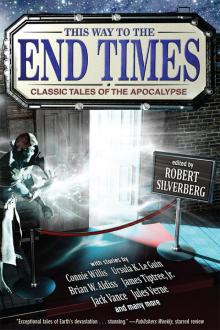 This Way to the End Times
This Way to the End Times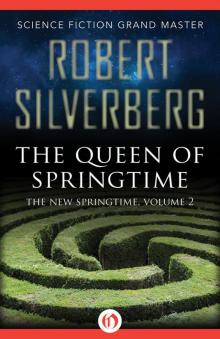 Queen of Springtime
Queen of Springtime Legends-Volume 3 Stories by the Masters of Modern Fantasy
Legends-Volume 3 Stories by the Masters of Modern Fantasy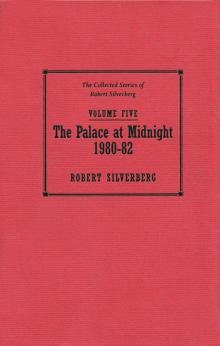 The Palace at Midnight - 1980–82 - The Collected Stories of Robert Silverberg Volume Five
The Palace at Midnight - 1980–82 - The Collected Stories of Robert Silverberg Volume Five Something Wild is Loose: The Collected Stories of Robert Silverberg, Volume Three
Something Wild is Loose: The Collected Stories of Robert Silverberg, Volume Three Multiples - 1983–87 - The Collected Stories of Robert Silverberg Volume Six
Multiples - 1983–87 - The Collected Stories of Robert Silverberg Volume Six Alaree
Alaree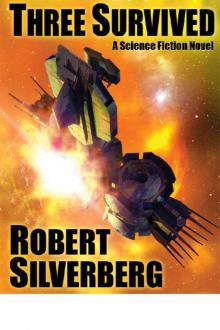 Three Survived: A Science Fiction Novel
Three Survived: A Science Fiction Novel Defenders of the Frontier
Defenders of the Frontier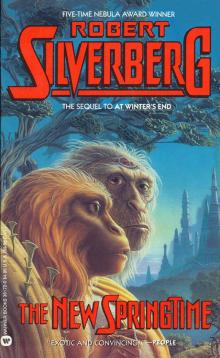 The New Springtime
The New Springtime We Are for the Dark - 1987–90 - The Collected Stories of Robert Silverberg Volume Seven
We Are for the Dark - 1987–90 - The Collected Stories of Robert Silverberg Volume Seven The Science Fiction Hall of Fame, Volume One 1929-1964--The Greatest Science Fiction Stories of All Time Chosen by the Members of the Science Fiction Writers of America
The Science Fiction Hall of Fame, Volume One 1929-1964--The Greatest Science Fiction Stories of All Time Chosen by the Members of the Science Fiction Writers of America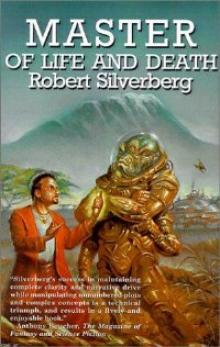 Master Of Life And Death
Master Of Life And Death Choke Chain
Choke Chain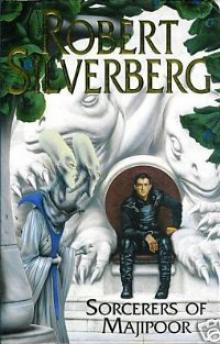 Sorcerers of Majipoor m-4
Sorcerers of Majipoor m-4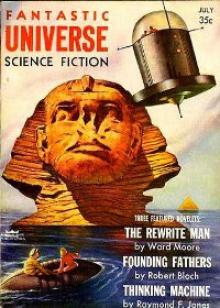 Absolutely Inflexible
Absolutely Inflexible Trips - 1962–73 - The Collected Stories of Robert Silverberg Volume Four
Trips - 1962–73 - The Collected Stories of Robert Silverberg Volume Four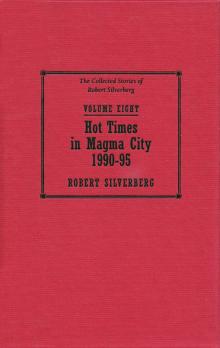 Hot Times in Magma City - 1990-95 - The Collected Stories of Robert Silverberg Volume Eight
Hot Times in Magma City - 1990-95 - The Collected Stories of Robert Silverberg Volume Eight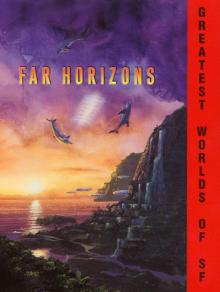 Far Horizons
Far Horizons The Queen of Springtime ns-2
The Queen of Springtime ns-2 The Seventh Science Fiction Megapack
The Seventh Science Fiction Megapack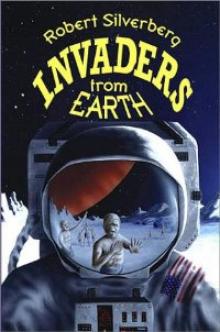 Invaders From Earth
Invaders From Earth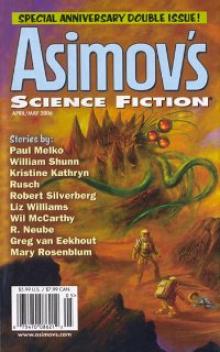 Hanosz Prime Goes To Old Earth
Hanosz Prime Goes To Old Earth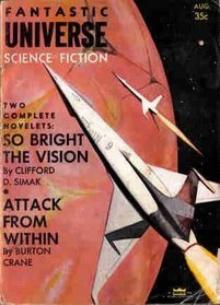 The Macauley Circuit
The Macauley Circuit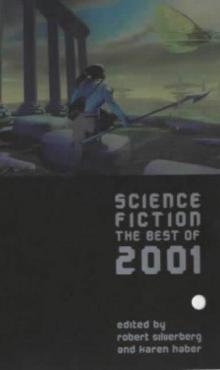 Science Fiction: The Best of 2001
Science Fiction: The Best of 2001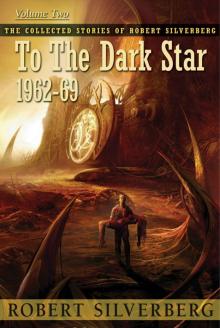 To the Dark Star: The Collected Stories of Robert Silverberg, Volume Two
To the Dark Star: The Collected Stories of Robert Silverberg, Volume Two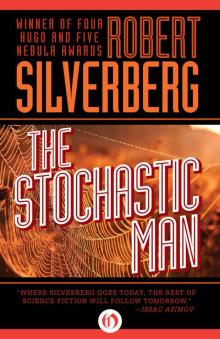 Stochastic Man
Stochastic Man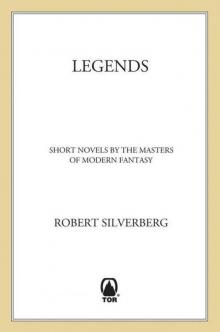 Legends: Stories By The Masters of Modern Fantasy
Legends: Stories By The Masters of Modern Fantasy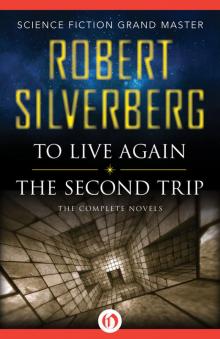 To Live Again And The Second Trip
To Live Again And The Second Trip Flies
Flies The Silent Invaders
The Silent Invaders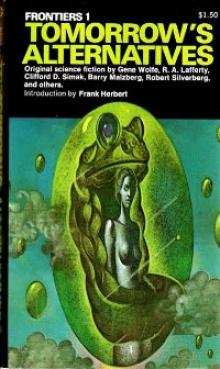 Ship-Sister, Star-Sister
Ship-Sister, Star-Sister